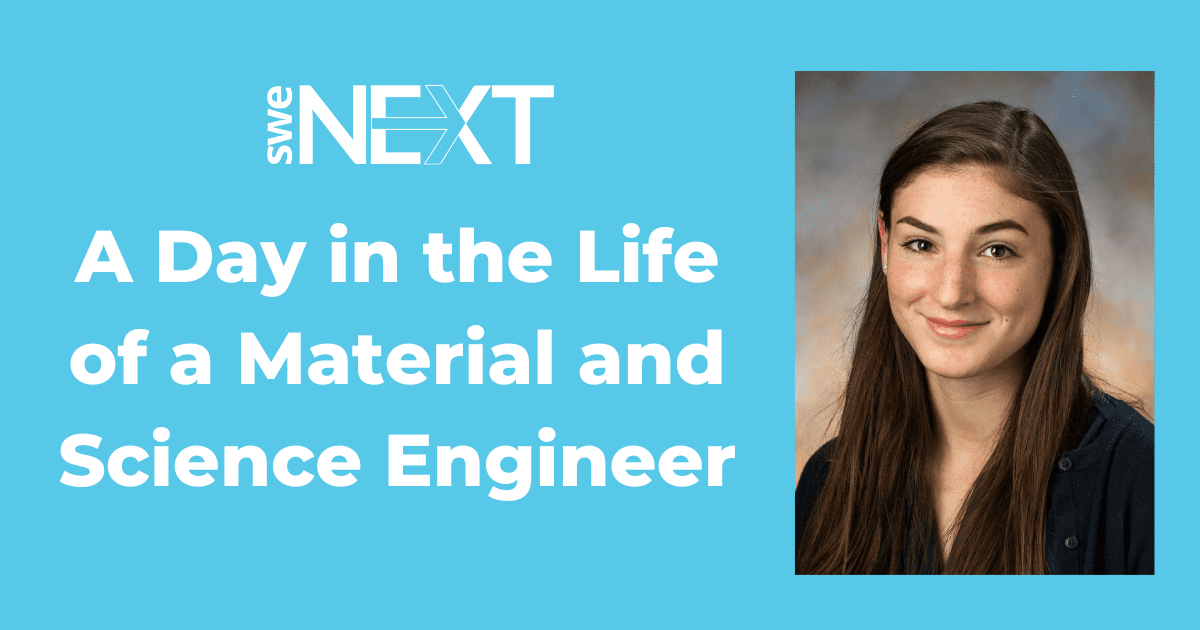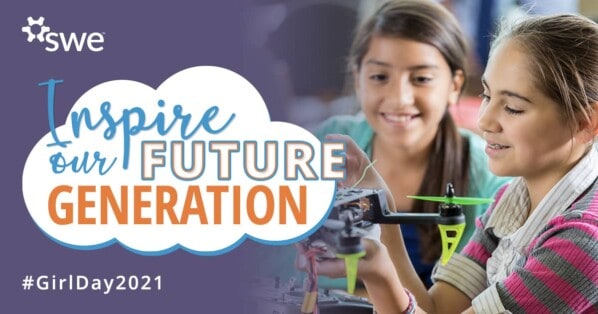Learn about Alyssa Denno’s path to becoming a materials engineer and what a typical day at work looks like!
I knew I wanted to be an engineer when I was in high school. I have always felt a passion for STEM and working with my hands, I loved taking things apart and putting them back together… sometimes correctly and sometimes not.
In school my favorite subjects were math and physics. I enjoyed the problem-solving aspect of mathematical equations, being faced with a seemingly unsolvable equation at face value but breaking it down into smaller, solvable steps that can be worked through one at a time to reach a solution.
Problem solving has always been a very rewarding process for me and embodies the problem-solving nature of the engineering field, in my opinion. I also enjoyed physics in the hands-on aspect. I have never been able to sit and read a textbook for hours, even now I prefer to spend my workday primarily in the lab, working hands-on with hardware.
I did my undergraduate at UCONN, in material science engineering with an emphasis on metallurgy. I graduated with my Bachelors of Science in materials science engineering in 2017.
From there I entered the workforce as a full time engineer at Pratt & Whitney, and completed a masters degree in Material Process Engineering through WPI while working full time and completed my masters in 2021. Pratt & Whitney is a world leader in the design, manufacture and service of military and commercial aircraft engines and auxiliary power units.
While at UCONN getting my undergraduate degree, I took a failure analysis course my senior year of school, and the professor, Dan Goberman was actually a fellow at the Raytheon Technologies Research institute (then called the united technologies research institute) and I found it very eye opening. That course taught me that failure is inevitable, in every aspect of life, not just engineering. Perfection doesn’t exist.
But the greatest opportunities to learn and grow and map out a new path to success are through failure. People tend to shy away from failure and paint it in a negative light, and yes, there are sometimes very painful losses that come with failure. But they are entirely enriched in the opportunity to make something smarter, safer, stronger. Hence my inclination towards failure analysis engineering in my career.
My senior design thesis was with Pratt & Whitney and it involved testing the high temp, operation-simulated capabilities of a trivalent chromium corrosion resistant coating being developed as a more sustainable alternative to hexavalent chromium conversion coatings. These are incredible, smart coatings with self-healing capabilities that allow them to protect the base alloy even if it is exposed.
Unfortunately, Hexachrome is a known carcinogen. We got comfortable working with pretty high tech lab instrumentation during that project, such as electrochemical impedance spectroscopy, salt fog simulations, and XRF analyses, and I found it very empowering to be able to work with such complex equipment and have confidence in the data output.
Collaborating with the incredibly intelligent engineers at P&W such as Promila Bhatia really influenced me towards the aerospace industry, specifically the material and process engineering subset of the aerospace industry, which is always developing, testing, and improving upon already cutting edge material technologies.
The project also opened my eyes to a new aspect of materials engineering I had not yet thought of: the environmental aspect. The materials we use have a significant impact on the planet. Jet engines fly all over the world every day, and the environmental impact over time is significant.
Realizing that as a materials engineer, I would be able to aid in developing more environmentally responsible and sustainable products that would positively affect the planet long term was very influential in my decision to join the material science engineering industry, specifically in aerospace.
I currently work as a failure analysis engineer within the material and process organization at Pratt & Whitney. In this role I investigate distressed gas turbine engine components (ex. corrosion, fracture, coating loss) to document and identify the distress mode and potential contributions through multiple lab analysis techniques including SEM, NDE, and metallography. In addition to the lab work I act as a technical focal in cross functional team settings to coordinate and determine root cause corrective actions (RCCA) for distressed engines and engine components. Another term for what I do is forensic engineering.
In a typical work day I interact with multiple different engineering and program groups. Program and project engineering manage the large scope multi-disciplinary investigations, as there could be multiple branches of the larger fault tree being investigated at once. Failure analysis only owns the material branch of the fault tree, but structures engineering may be doing a vibratory structural analysis tangentially, design engineering could be doing a similar analysis etc. Engineers from all of these groups work our own fault tree branches and convene with our findings to work towards a root cause and corrective actions.
The specific group I work in at P&W is 50% women. I know engineering is still a male dominated industry, and I feel incredibly lucky to have such a great support system of hardworking and intelligent women at work.
I started at P&W as a rotational engineer within the quality organization. Being a rotational engineer during my initial years in the industry gave me the broad scope experience to figure out what I really wanted to do within the aerospace industry without committing years at a time to roles that weren’t the best fit for me as an individual contributor.
One specific rotation I had was in product recall, which was the group that managed root cause and corrective actions from the quality side when there was an engine field event. Working in that group was intense and fast paced and really ignited a passion for the investigative aspect of engineering and the industry. Each field event and failure is like a puzzle that you have to find all the pieces for and solve.
My favorite part about being a materials engineer is that new discoveries are happening every day in our field. We find material failure conditions that kick off multi-year investigations and lead to metallurgical discoveries, innovations, and even patents. Every single day I work I learn something new! Material science is complex and the scope is vast. There is room for everyone in our field and there are endless new concepts waiting to be discovered!
Everything is made out of material, metals, polymers, nano-materials, ceramics, etc. Every industry needs materials engineers. It really is the field of a million opportunities! If you’re not sure exactly what you would do with an engineering degree, that’s ok, there WILL be opportunities for materials engineers in whatever you choose down the road. If it’s made out of material, there’s an opportunity for you!
About the Author
Written by Emily Tacopina: Emily is an Engineering Project Manager at FM Approvals. Emily graduated from the University of Rhode Island in 2017 with a BS degree in Mechanical Engineering.
Authors
-

SWE Blog provides up-to-date information and news about the Society and how our members are making a difference every day. You’ll find stories about SWE members, engineering, technology, and other STEM-related topics.
-
Written by Emily Tacopina: Emily is a Consultant Engineer at FM Global. Emily graduated from the University of Rhode Island with a BS degree in Mechanical Engineering.






